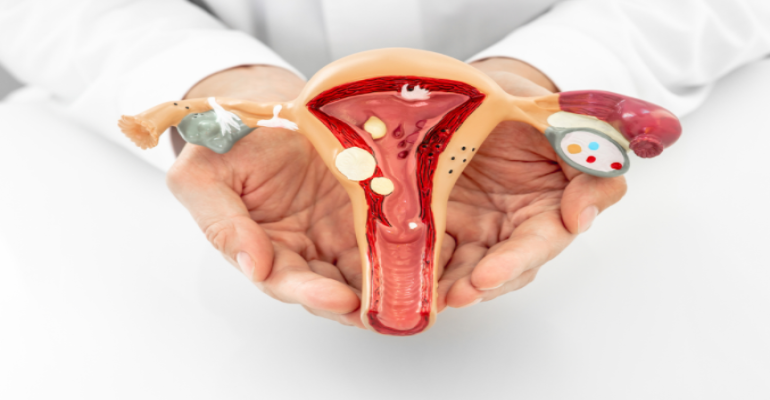Uterine polyps are growths that occur in the inner lining of the uterus, known as the endometrium. These polyps develop when the endometrial tissue grows more than it should. They can range in size from a few millimeters to several centimeters. While they are generally benign, they may cause fertility problems depending on their characteristics.
Who Is at Risk for Uterine Polyps?
Uterine polyps can be seen in women of all ages but are more commonly observed in women between the ages of 30 and 50. Conditions such as obesity, high blood pressure, and a history of breast cancer treatment increase the risk of developing uterine polyps.
What Causes Uterine Polyps?
The exact factors that cause uterine polyps are not fully known. However, some risk elements are known to trigger their formation. Hormonal fluctuations are one of the primary contributing factors.
What Are the Symptoms of Uterine Polyps?
Symptoms of uterine polyps may include:
- Irregular menstruation
- Heavy or intense menstrual bleeding
- Bleeding or spotting between periods
- Postmenopausal vaginal spotting or bleeding
- Infertility
Symptoms can vary in intensity depending on the number and size of the polyps. Menstrual irregularities are the most common symptom. In the presence of uterine polyps, the menstrual cycle becomes quite unstable.
Long-lasting or excessive menstrual bleeding is also one of the most frequent symptoms. Bleeding after intercourse or postmenopausal bleeding are also commonly observed signs of uterine polyps.
How Is an Endometrial Polyp Diagnosed?
To diagnose uterine polyps, it is important to consult an experienced gynecologist. If an ultrasound does not provide conclusive results, a SIS test—where saline is infused into the uterus—can be used. A hysterosalpingography (HSG) or hysteroscopy may also be employed to diagnose uterine polyps.
What Happens If Uterine Polyps Are Not Treated?
Uterine polyps can occur in various sizes and in multiple numbers. Since they can cause irregular menstrual bleeding, they may lead to anemia. They can also hinder the passage of sperm or the implantation of an embryo, which may prevent pregnancy. Therefore, it is essential to treat polyps under medical supervision.
How Is Endometrial Polyp Treated?
Hysteroscopy is one of the most successful treatment methods for endometrial polyps. A thin and long camera is inserted into the uterus to perform both diagnosis and treatment. The polyps are first visualized with a device called a hysteroscope that allows examination of the uterine cavity. Then, the relevant tissues are removed and sent to pathology to determine whether they are benign or malignant.
If there are no complications following the polyp surgery (hysteroscopy), the patient can usually return home the same day. The procedure typically takes around 30 minutes and is usually performed under sedation. Because there is a risk of recurrence, regular follow-up is very important.


